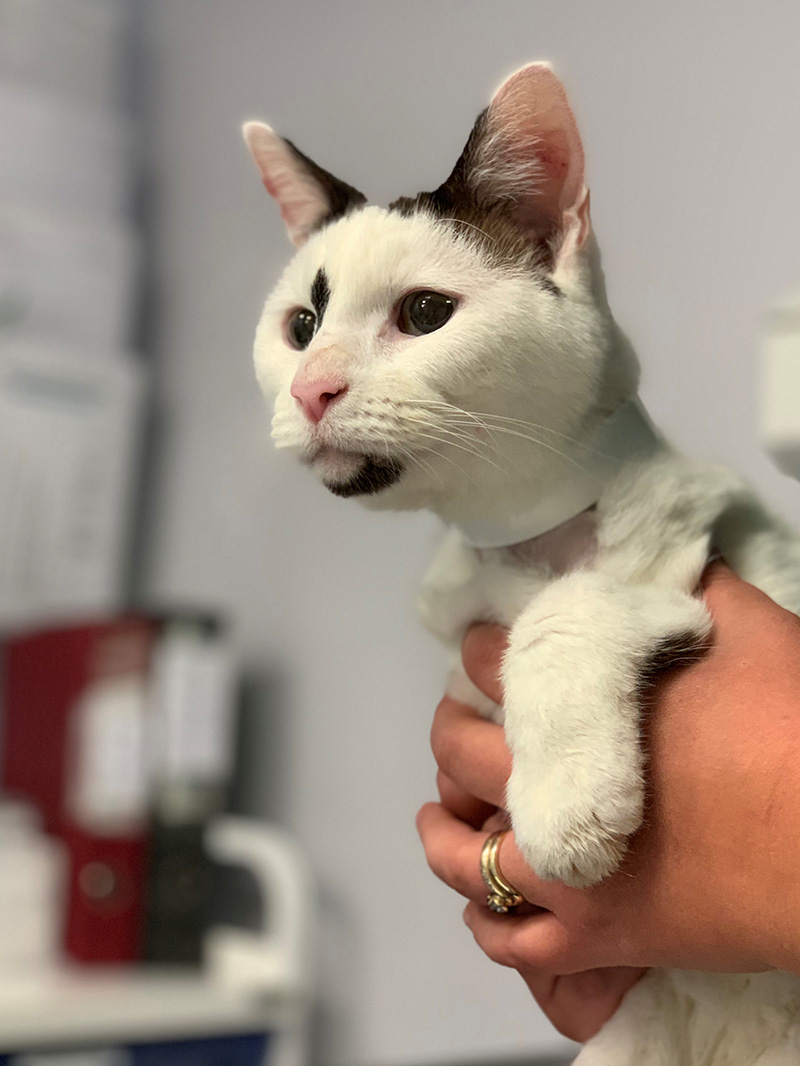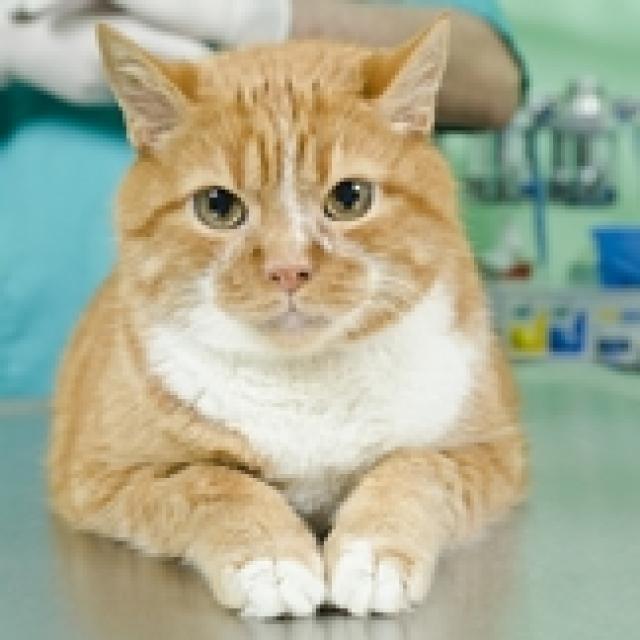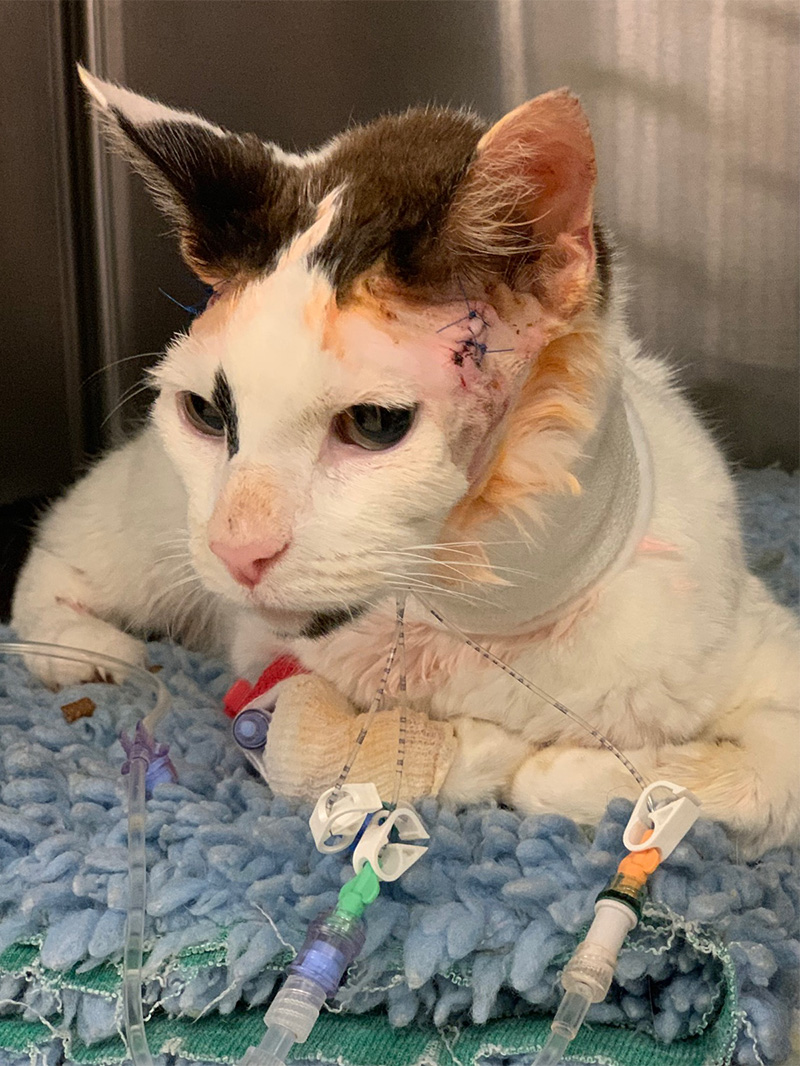treating acromegaly in cats
J Vet Intern Med. The catabolic effects eg lipolysis and reduced cellular glucose transport are direct effects of GH.

Acromegaly In Cats The Veterinary Nurse
Moreover in this patient concurrent insulin-resistant diabetes mellitus resolved completely.

. Not all cats are candidates for this treatment. Rucinsky cautions that acromegaly in cats is very challenging to treat. Acromegaly will typically be treated with both a physical examination of your pets symptoms and a series of blood tests to determine the levels of certain pituitary hormones in his blood.
In one study for example cobalt radiotherapy was used in which six out of seven acromegalic cats showed permanent or temporary resolution of insulin resistance following therapy. Acromegaly is an endocrine disease consisting of growth hormone GH hypersecretion. Feline acromegaly occurs in older cats 814 years old and appears to be more common in malesClinical signs of uncontrolled diabetes mellitus are often the first sign of acromegaly in cats.
In another case the surgical removal of the pituary tumor by freezing cryohypophysectomy also showed success. The most conservative and most common treatment for cats with acromegaly is simply to increase the dosage of insulin in an attempt to bring the diabetes under control. Diagnosing and Treating Cats with Acromegaly.
It is a rare disease but unfortunately it can be quite serious. Release is episodic and is controlled by growth hormone releasing hormone GHrH and inhibited by somatostatin. The primary symptoms of this condition are physical.
The most significant clinical finding of acromegaly is the presence of insulin-resistant diabetes mellitus. Agressively increase insulin as needed and use a rapid insulin along with your normal longer acting insulin to help bring your cats blood glucose levels under control. Net weight gain of lean body mass in cats with uncontrolled diabetes mellitus is a key sign of.
Treating the effects of Acromegaly The numerous side effects of Acromegaly do need specific help and treatment. Successful treatment of acromegaly in a diabetic cat with transsphenoidal hypophysectomy This is the first report detailing transsphenoidal hypophysectomy as a feasible and effective treatment for feline acromegaly due to a pituitary somatotroph adenoma. No matter which treatment modality is chosen acromegaly-associated complications and comorbidities need to be attended to in order to ensure a maximal quality of life.
Therefore it is still necessary to consider medical treatment in cats which mainly consists of the correct treatment of insulin-resistant diabetes. Therefore polydipsia polyuria and polyphagia are the most common presenting signs. Diagnosis is currently based upon brain imaging and measurement of serum GH andor insulin-like growth factor-1 concentrations.
Hypophysectomy is the treatment of choice for human patients with acromegaly and can result in fast and complete normalization of GH levels. Serum insulin-like growth factor-I concentration in cats with DM and acromegaly. While this may help control the clinical signs of diabetes raising the insulin dose has no effect on growth hormone secretion.
Symptoms of Acromegaly in Cats. The most common treatment. One study found that IGF-1 concentrations in nonacromegalic diabetic cats receiving long-term insulin treatment 14 months had higher concentrations of IGF-1 than nondiabetic cats8 It was proposed that insulin treatment allowed for beta cell regeneration and increased portal insulin leading to elevations in IGF-1 concentrations.
Definitive treatment in cats is not well described but radiation therapy appears promising. The prognosis will depend on the possibility of stabilizing diabetes since most cats with feline acromegaly die from heart or kidney failure or complications from diabetes. For most cats the recommended treatment is radiation therapy.
The origin of this alteration in cats is the presence of a tumor in the pituitary. The anabolic effect of GH ie soft tissue and skeletal growth and protein synthesis are mediated by insulin-growth factor IGF-1. Early detection prevents unnecessary suffering and the additional costs associated with attempting to achieve good glycemic control of the diabetic cats.
For example if your cat is in heart failure as a result of the acromegaly heshe may not be a candidate for the anesthetic episodes required for treatment. Nelson RW Feldman EC Kass PH Pollard R Refsal KR. For cats there isnt a great option for medicating and mostly we just try to control the secondary issues the.
Acromegaly in Cats Treatment.

A Male European Shorthair Cat At A 11 Years Of Age And At B 14 Download Scientific Diagram

Acromegaly In Cats The Veterinary Nurse

Pioneering Hypophysectomy Treatment Reaches 100 Case Milestone

International Society Of Feline Medicine Free Access Friday Diabetes Mellitus Remission In Three Cats With Hypersomatotropism After Cabergoline Treatment Spontaneous Hypersomatotropism Or Acromegaly Is A Chronic Metabolic Disease Caused By

A Male European Shorthair Cat At A 11 Years Of Age And At B 14 Download Scientific Diagram

Pdf Acromegaly In A Non Diabetic Cat Semantic Scholar
Pharmacological Treatment With Cabergoline In Three Cats With Acromegaly

Acromegaly In A Domestic Short Haired Cat First Report From Iran Semantic Scholar

Acromegaly In Dogs And Cats Sciencedirect

Feline Acromegaly Semantic Scholar

Feline Acromegaly An Uncommon Disease Vetcall Q Superstore Qld

Acromegaly In Cats Rare But Probably Underdiagnosed Petmd

Insulin Dependent Diabetic Cat Study

Feline Acromegaly Endocrine System Msd Veterinary Manual

Feline Acromegaly Sarah S First Hand Experience With Her Cat Meows N Paws

Acromegaly In Cats The Veterinary Nurse

Pioneering Hypophysectomy Treatment Reaches 100 Case Milestone